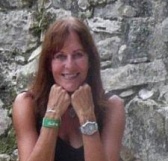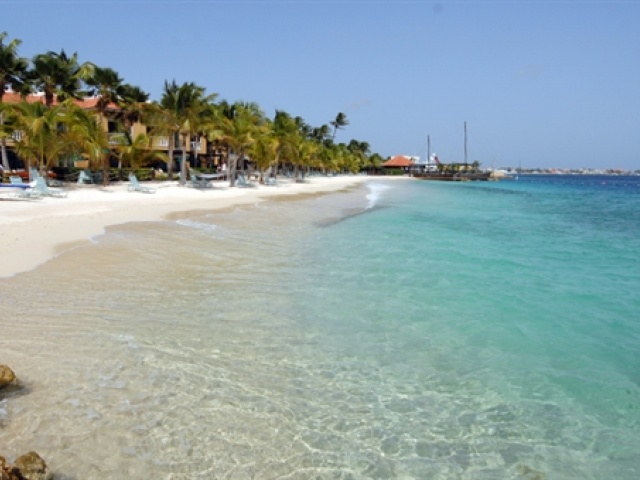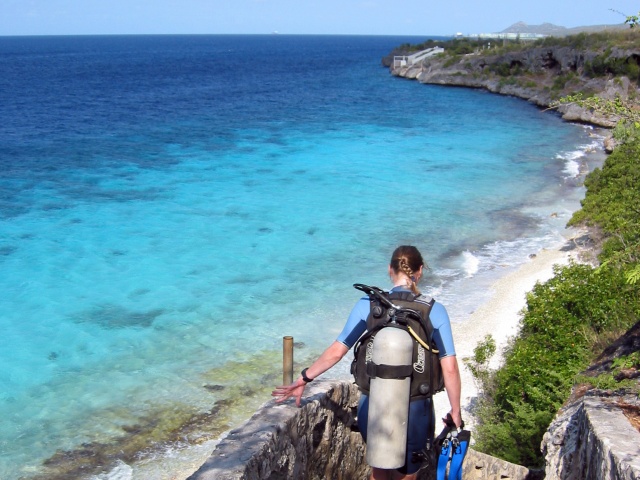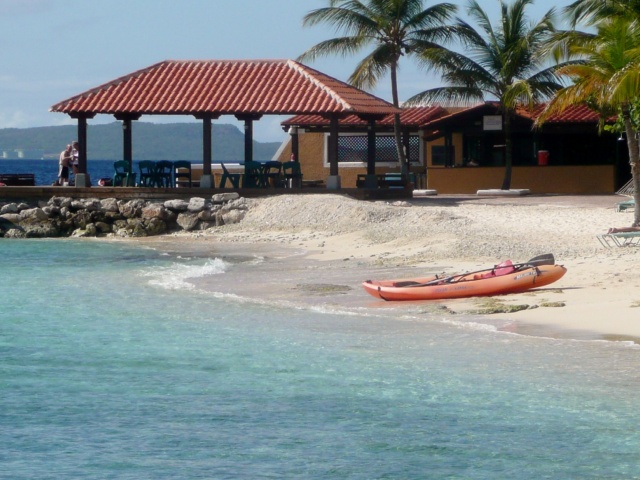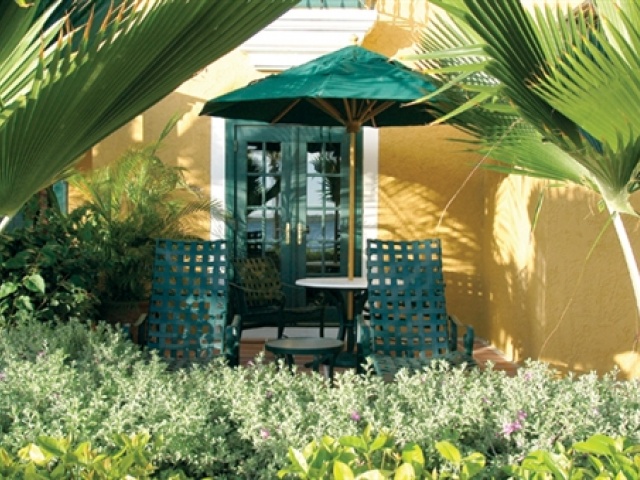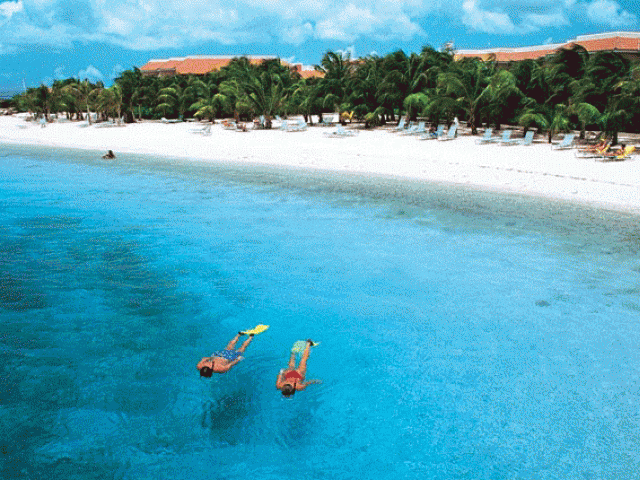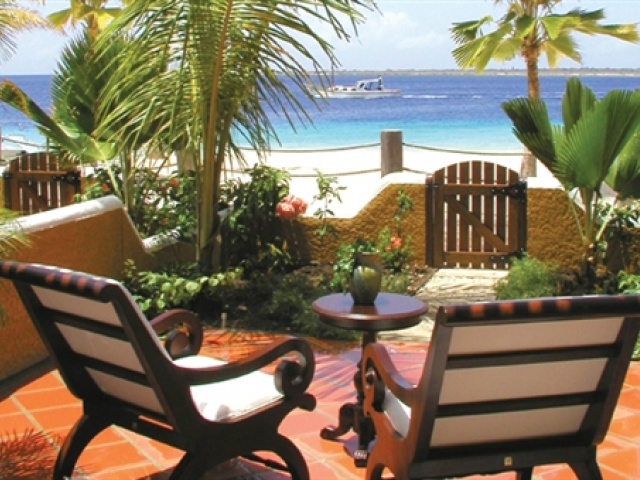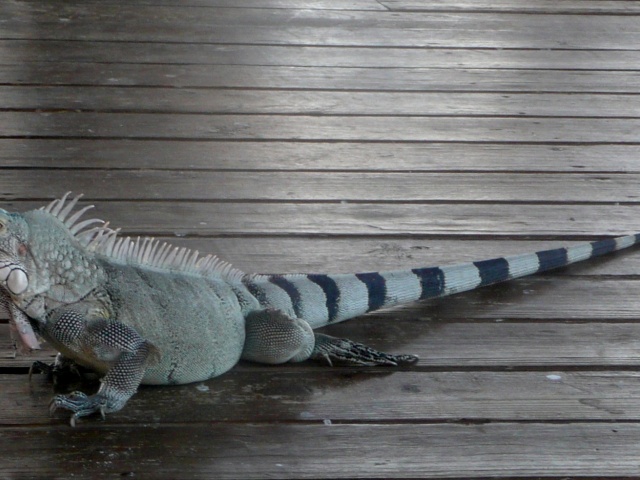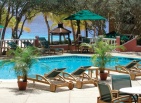Harbour Village :
Bonaire
Bonaire's most luxurious resort.
|
| Share |
Calm, peaceful, laid-back. In the movie “Being There”, Chance, the lead character, embodies all of these traits. There, in Bonaire, a sense of calm, peace and easy-living exists, as well. This Caribbean island is 50 miles north of Venezuela and 80 miles east of Aruba. Along with Aruba and Curacao, it forms the ABC islands of the Dutch Antilles. Bonaire’s earliest known inhabitants were the Caquetio Indians who came by canoe from Venezuela in about AD 1000. They were apparently a very tall people because the Spanish name for the island was “las islas de los gigantes,” island of the giants.
On a recent visit, no giants, only a warm and hospitable people who embody the spirit of their land – relaxed and easy-going. Bonaire is known for its pristine tropical vegetation, beaches of white-powder sand, stunning coral reefs, and it is consistently recognized as the top diving destination in the Caribbean.
Dive Right In
I was told that diving in Bonaire will spoil me for all other dive experiences. So, what’s a newbie diver supposed to do but give it a try. At Great Adventures Bonaire, a 5-star dive operation, I met Mark, an instructor of many years experience, who gave me a one-on-one lesson. Before we dove, he explained the use of the regulator (for breathing), the vest (for buoyancy control to descend and ascend) and calculator (gauging time underwater). He then strapped a 40-lb. air cylinder to my back and fitted me with a wetsuit, mask and a pair of fins. Mark explained that SCUBA stands for “self-contained, underwater, breathing apparatus.” Who knew? Now I was good to go.
We descended to just about 20 feet and immediately I was transported into another world. All trepidation disappeared as I lost myself in this underwater fantasy of the most amazing, weird, gorgeous creatures ever to be seen. There were fat Blue Parrotfish, adorable Angelfish, yellow and black Rock Beauties and, yikes! a Spotted Moray Eel, not to mention exquisite coral of all shapes, sizes and colors. Because of Mark’s calm and confident demeanor, my initial foray into the deep was all good, start to the finish - about 90 minutes later.
It Takes a Village
The lovely village of which I speak is, of course, Harbour Village Beach Club, the exclusive beach-front enclave and the island’s most luxurious resort. The property consists of clusters of Dutch Caribbean-style one and two-bedroom suites set amid lush tropical gardens and bordered by a white sand beach and picturesque marina. On site is a world-class spa with pampering facials, wraps and massages –particularly welcome after a day of diving or windsurfing. Entering my room, I was delighted to find it decorated in typical Colonial Plantation style: dark teakwood furniture, tiled floor and romantic netting enclosing the bed. A door led to an expansive patio, perfect for doing, well, nothing. Ok, so I dragged my Kindle to my lounge chair a few times but truth be told, languorously lying supine was my favored pastime. Harbour Village was made for this!
Star Light, Star Bright
One night, a very special treat - the staff set up a table for two on the sand facing the sea. Tiki torches and candles were our only light, save for a brilliant starry sky. The sound: just murmured conversation and waves gently lapping the shore. I’m told that this is a favored dining spot for the just-married and honeymooners. I fit into neither category but dining sur la plage suited me to a “T.” It was also terrific to experience inspired cuisine at the resort’s open air La Balandra Restaurant. Our companion most days was a large green iguana who stared intently at us until he was thrown a crumb or two. An Amuse Bouche, to be sure.
The most fun way to see the island is from a “tuk tuk”, an open air electrical vehicle. The Bon Tuk company is operated by Bas van den Hee and his partner. Bas drove us around in this cute cart, stopping frequently so we could take pictures while he explained what we were seeing. We visited the Flamingo Sanctuary, one of the few nesting places for Caribbean flamingos whose population in spring swells to 5,000 pretty-in-pink birds. Bas took us to the island’s southern tip to see tiny hut shelters built in the 1800s for African slaves that were brought over by the Dutch West Indies Company to work the salt flats.
Color it Pink
Picture a body of water that morphs from sky blue to navy to emerald green. In Bonaire, yes. But, can you believe that here you’ll also find water that is pink? In the distance on the salt flats… perfectly pink ponds. Bas ....




